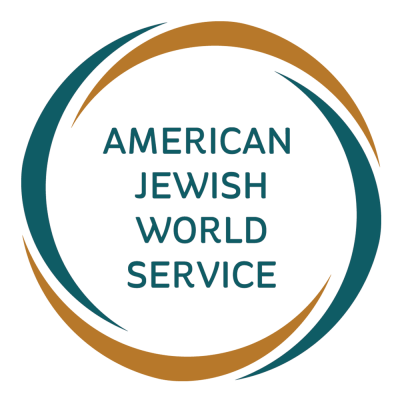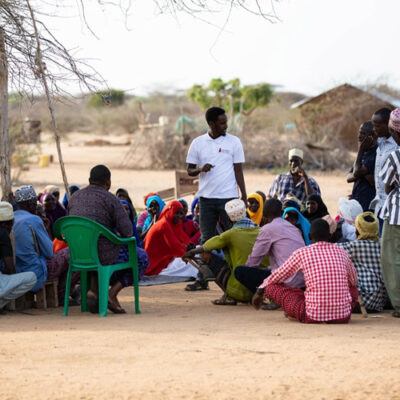 Originally posted on the blog of Where Do You Give?
Originally posted on the blog of Where Do You Give?
In today’s world, the opportunity to engage in the work of social change is, literally, at our fingertips. But, does this newfound accessibility make us better donors? Adene Sacks and Dawne Bear Novicoff talk about our role as donors in an age of interconnectedness and independence:
These days, it happens all the time. A 13-year old girl, preparing for her bat-mitzvah, sits down with her parents to talk about the mitzvah of giving tzedakah (charity or justice) for the occasion. The family turns to the internet and identifies a worthy project where they will ask friends and relatives to donate. With a few keyboard strokes, this family is able to express support for a project of their choice and provide funding for an individual who may live 10,000 miles away.
In today’s world, the opportunity to engage in the work of social change is, literally, at our fingertips. But, does this newfound accessibility make us better donors?
As Jews, our tradition tells us we are obligated to give tzedakah and also prescribes the best way for that transaction to occur. The medieval Jewish philosopher Maimonides (a.k.a. Rambam) describes eight degrees of tzedakah, each higher than the next. The highest level is achieved by providing a person in need with the ability to improve their own situation via a loan or an employment opportunity. If this ideal cannot be achieved, Rambam makes anonymity between donor and recipient a priority.
In philanthropy, anonymity has long been considered a virtue – and has always required a third party to execute. According to Rambam, a donor should have high expectations for the overseer of funds. He advises donors to make sure this intermediary is wise and fair and refers to sages and rabbis as the benchmark. In our time, intermediaries play multiple roles in enabling our philanthropy. In its simplest form, an intermediary fulfills a donor’s wishes. In its most complicated, it navigates the assessment of communal needs alongside donor intent.
But this triangle between donor, recipient and intermediary is in flux. The growing connectedness of the world is breaking down the boundaries to information and to one another. The result: donors today have greater independence and exposure to the multitude of society’s challenges, way beyond their immediate neighborhood. Today, tzedakah is a global conversation in a world that is shrinking to the size of a small village.
The question remains: does this access and information actually improve on our ability as donors to address the core needs of the needy? Or does independence give us a false sense of attaining Rambam’s highest levels of tzedakah?
What is at risk for today’s donors is tunnel vision. Online, a woman looking for a loan to start a grocery store in India has the same opportunity to convey her needs as the neighborhood food pantry looking for donations to stock its shelves. Most online portals do not offer the perspective on communal needs and priorities that the village “rabbi” once provided.
For the recipients of funds, this increased connectedness provides both liberty and uncertainty. Global access to diverse networks and digital tools means that a potential grantee (in the form of organization OR individual) can make a case directly to a greater number of potential supporters. Online sites like donorschoose.org or kiva.org tend to broker interactions between individuals which mimic Rambam’s highest level of tzedakah—providing loans and investments that further self-sufficiency.
But, of course, these loans are often only a piece of what’s needed in a community over the long term. As donations are more targeted, then what often follows is a degradation of income sources that, in the past, have provided repeated, undesignated support. In the Jewish world, this is most palpable among agencies who have been long-time beneficiaries of Jewish Federations’ annual campaigns. These communal funds are giving way to more donor designated project dollars which may erode a once reliable safety net.
Given the opportunities and pitfalls that now face both donor and recipient, the intermediary continues to be of great import—albeit with a different set of roles and responsibilities. With growing exposure to philanthropic opportunities, there is just less appetite for the anonymous donation to the communal fund. In its place, intermediaries are being called upon to play the less directive roles of advocate, network weaver and educator. These new functions should be signature to those looking to advise donors and advocate for communal needs. They serve as a bulwark to the tunnel vision that is a donor’s greatest risk in this new environment.
In the end, Rambam’s lessons about the primacy of confidentiality, dignity and self-sufficiency, despite our alleged sophistication, continue to challenge donors to be better. Our connectedness has made the global more immediate yet this can also narrow our outlook on the needs of a community (regardless of how you define the borders of your community). More than ever, it will be essential for donors to identify a set of trusted advisors who can offer a bird’s eye view on the issues and serve as advocates for those that don’t necessarily come directly into view. The global world is bigger than the medieval village and a bit more complex too. We best not let our independence compromise our perspective and communal obligation.
Dawne Bear Novicoff and Adene Sacks are both Senior Program Officers at the Jim Joseph Foundation. The Jim Joseph Foundation is committed to more young Jews choosing to live vibrant Jewish lives. We’d love to hear from you. On twitter @adenesacks or email asacks/dbnovicoff at jimjosephfoundation.org


